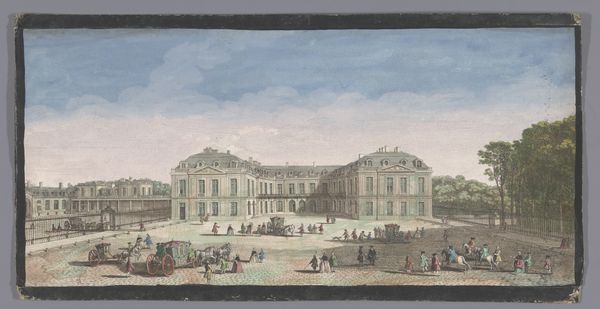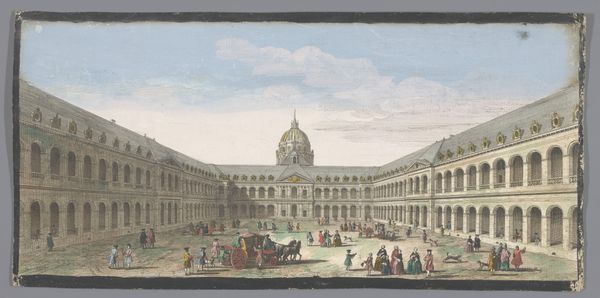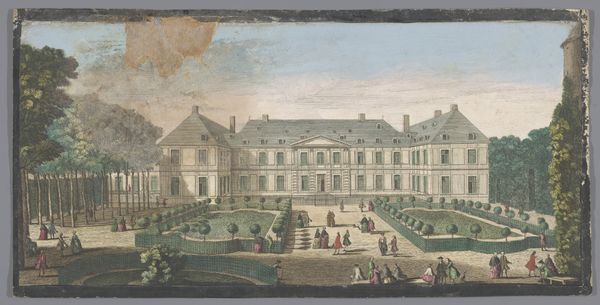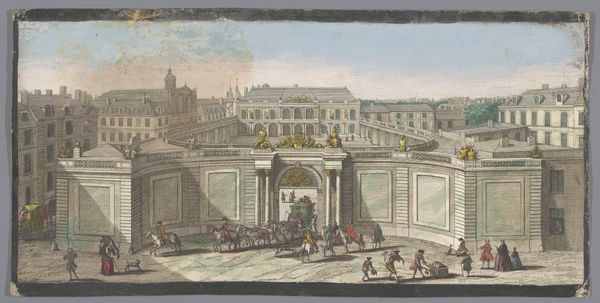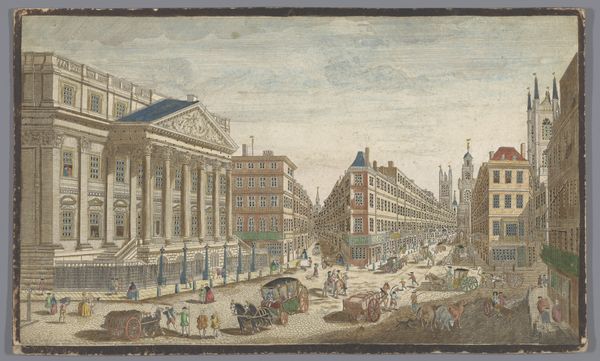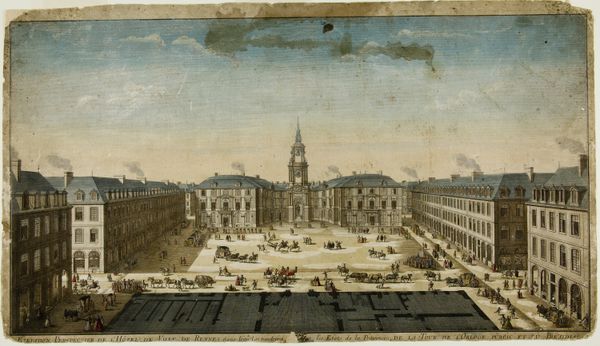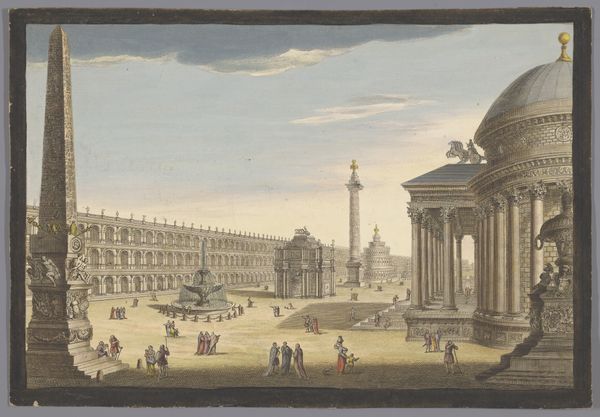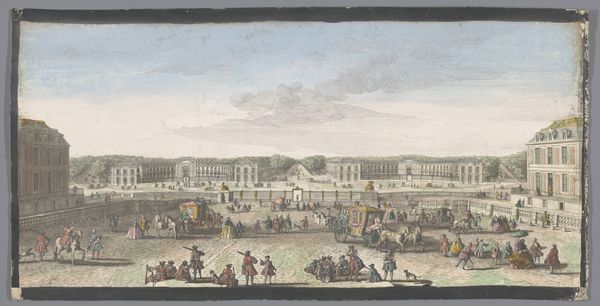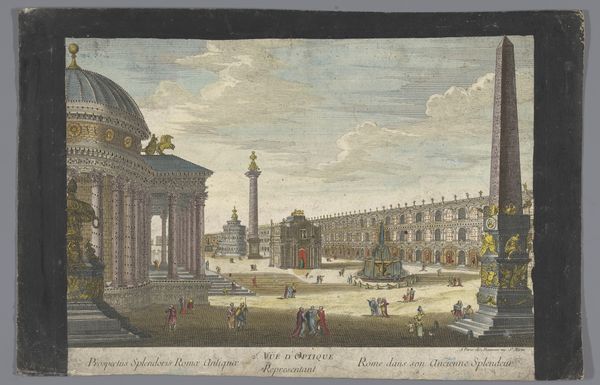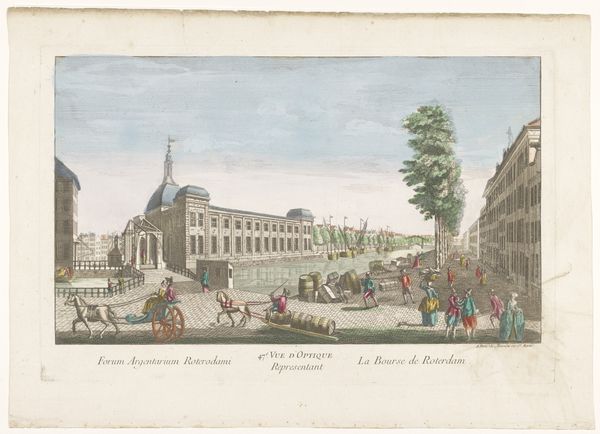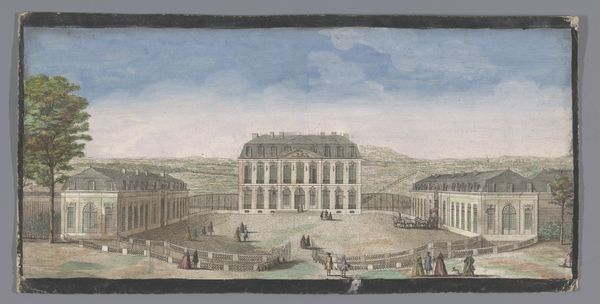
#
aged paper
#
toned paper
#
water colours
#
handmade artwork painting
#
personal sketchbook
#
coloured pencil
#
square
#
watercolour bleed
#
watercolour illustration
#
mixed medium
#
watercolor
Dimensions: height 227 mm, width 478 mm
Copyright: Rijks Museum: Open Domain
Editor: This delicate watercolour and pencil artwork, "Gezicht op de Place Vendôme te Parijs" from the 18th century, presents a detailed view of the Place Vendôme. It has such a formal, almost stage-like quality, don’t you think? What's most striking to you about the artwork’s context, its role in visual culture at the time? Curator: Indeed. Considering the period, this image offers a glimpse into the intersection of urban planning and power. The Place Vendôme itself was designed as a monument to Louis XIV, and its architecture embodies absolutist ideals. Think of it as propaganda materialized, meant to project royal power through urban space. How does the artist depict the people within this space? Editor: Well, they appear small, almost like props, moving about but not really disrupting the scene’s order. Curator: Precisely! It reinforces the idea of the individual being secondary to the overarching order of the state. The very act of creating this kind of image also needs to be considered within the developing market for views of cities, serving both a decorative function and reinforcing a sense of national pride, or even acting as souvenirs for wealthy tourists. Were images like this widely accessible? Editor: I imagine mostly to the wealthier classes, given the materials and probable cost. It seems almost like an idealized version of reality. Curator: Exactly. It tells us a lot about the aspirations and values of the patrons who commissioned and consumed such works. We can examine it to see how spaces like Place Vendôme helped to solidify particular socio-political narratives, especially around monarchy and nationhood. Editor: That’s fascinating; it adds so much depth to what I initially saw as a simple, elegant scene. It really changes the way I perceive these kinds of historical cityscapes. Curator: Understanding the intersection of art, power, and social structure gives these images an important voice, telling us a lot more about history than just what a place looked like.
Comments
No comments
Be the first to comment and join the conversation on the ultimate creative platform.

